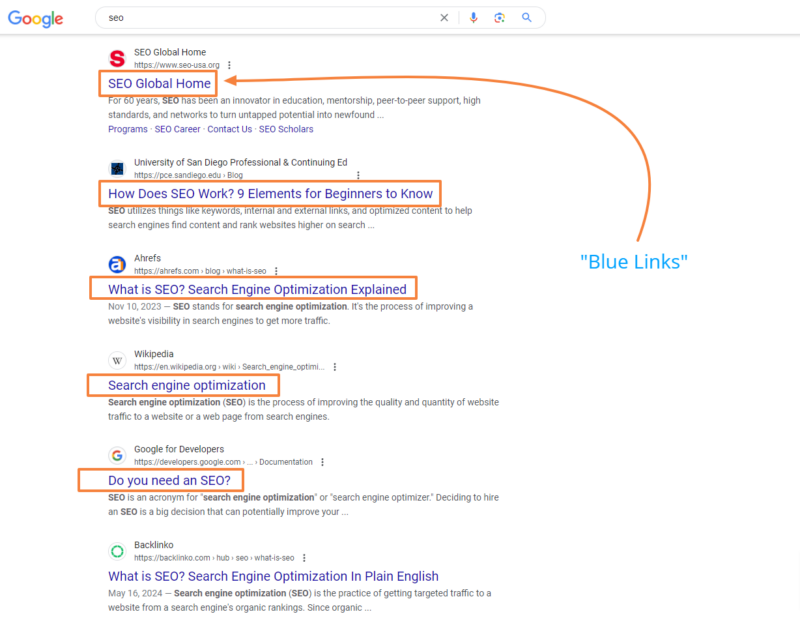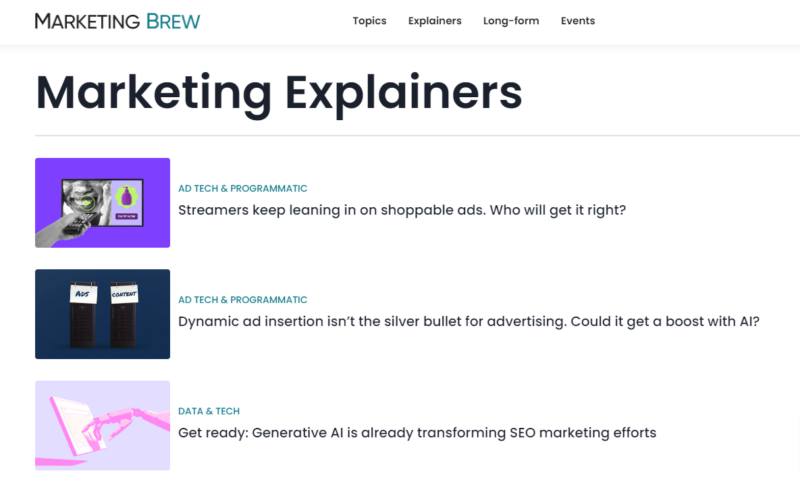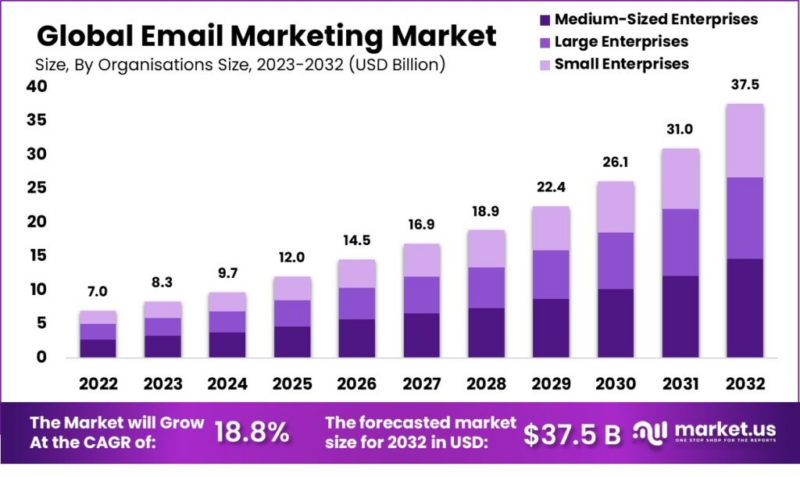Digital marketing has changed quickly, using AI and social media marketing to alter how brands talk to customers.
Email newsletters used to be key in digital marketing to reach people directly. This post looks at whether they are still useful and effective today.
If search engines fall behind newer technologies, we must examine whether email newsletters still hold value in digital marketing.
The Decline of Search Engine Use and the Rise of Alternative Marketing Strategies
According to Gartner, search traffic is predicted to drop by 25% by 2026. This decline isn’t limited to organic traffic but also encompasses all search traffic, including paid clicks. As people increasingly turn to AI chatbots and virtual agents instead of traditional search engines, the climate of digital marketing is set to undergo significant changes.
This shift indicates a movement away from the “10 blue links” model of search engine results, with users seeking more interactive and immediate responses from AI-driven platforms.
While the exact percentage of the decline may be debated, the trend toward diversification in how people search for information is clear.

Platforms like TikTok, Instagram, and AI-powered assistants like ChatGPT are becoming more prevalent as search alternatives, possibly supplanting traditional search engine models that we’ve been used to for so long.
The chances that search engines like Google just disappear because of search alternatives are really slim, but it will mean that usage on traditional search engines may slow down unless they adapt to the ways users prefer to consume information.
And what better way to address lower search engine use than with a digitally direct alternative?
Another Way to Drive Traffic: Marketing Newsletters
If search engine usage ends up declining, digital marketers will need to find an alternative vessel to generate interest in their brands.
While there are plenty of alternatives to Search engine marketing, one strategy that could fill any sort of gap left over by decreased search engine usage is leveraging email newsletters more aggressively.
Newsletters offer a few distinct advantages in today’s online climate:
- Direct Access to Engaged Audiences: Email marketing provides a direct line to subscribers who have already expressed interest in a brand’s content. This engaged audience is more likely to interact with and respond to tailored messages, making email marketing a key component of an effective marketing strategy.
- Enhanced Control Over Content Marketing: Unlike a social media strategy, where algorithms dictate content visibility, email newsletters give digital marketers complete control over what content is sent and when. This ensures that important updates and promotions reach the intended audience without interference.
- Personalization and Customization: A marketing newsletter allows for high levels of personalization. By segmenting subscribers based on their interests and behaviors, marketers can deliver highly relevant content, like personal stories and direct-need solutions, to motivate engagement and loyalty. Email marketers can use data-driven insights to craft subject lines and content that resonate with their audience.
- Adaptability to Audience Feedback: Digital marketers can quickly adapt their email strategies based on subscriber feedback and interaction data. This agility enables continuous improvement and alignment with audience preferences, ensuring that the content remains valuable and engaging.
We can’t deny that it works even on us here at Single Grain.
For example, a lot of the team subscribes to Marketing Brew, which provides a font of knowledge with all things related to marketing (often inspiring content like what you’re reading right now, as well as talking points for our Marketing School podcast episodes).
If you’re as nerdy about marketing news and strategies as we are, you can’t go wrong subscribing to Marketing Brew.

(Image Source: Marketing Brew)
The Role and Business Viability of Newsletters in Digital Marketing
As fewer people use traditional search engines, businesses focus more on direct ways to reach customers, like email newsletters. This approach is key in keeping and engaging an audience with tailored content.
Market.us projects that the amount that businesses spend on email marketing is likely to surge from $7 billion in 2023 to $9.7 billion by the end of 2024 (and 37.5 billion by 2032).

(Image Source: Market.us)
It’s because email newsletters let businesses talk directly to their subscribers, which creates highly direct and personalized opportunities to communicate brand messaging, offers, and helpful content to brand followers and customers.
This method avoids the crowded social media scene and strengthens the personal connection with the audience.
Let’s look a little deeper at how this transition from search engines can benefit email newsletters:
- Direct access to engaged audiences who want to receive updates: Email newsletters provide direct access to engaged audiences who want to receive updates and curated lists of information for the things they care about. Since these subscribers always opt-in, they show a clear interest in the brand’s content, which ensures higher engagement rates.
- More control over what content is sent and when: Email newsletters give businesses more control over what content is sent and when. This ensures that important updates and promotions reach the intended audience without interference from social media algorithms.
- The ability to change content based on what the audience thinks and what the data shows: Marketing newsletters offer the ability to change content based on audience feedback and data insights. This allows marketers to refine their content to better meet audience preferences, ensuring relevance and engagement.
Key Takeaway: As search engines become less popular, email newsletters are increasingly important for direct and personal communication with audiences.
Engagement and Personalization through Newsletters
Email newsletters are great for connecting personally with subscribers. They let you customize content to match the interests and needs of your audience, which boosts engagement.
With the right tools, companies can send content that is highly relevant and appealing to their audience, increasing loyalty and retention.
To make the most of personalization in your newsletters, try these strategies:
- Segment your audience: Divide your audience into segments to ensure the content is relevant to different groups. This targeted approach ensures that each segment receives content that directly addresses their specific interests and needs.
- Let the data lead you: Use data on subscriber behavior to tailor messages based on their past interactions. Analyzing this data allows for highly personalized messaging, increasing the likelihood of engagement and conversion.
- Curate your content creation: Keep updating your content strategy based on what your subscribers say and how they interact with your emails. Regularly refining your email newsletter strategy helps maintain relevance and keeps your audience engaged and satisfied.
Key Takeaway: Personalized and periodic newsletters lead to deeper engagement and help turn subscribers into loyal fans.
Economic Viability and Monetization of Newsletters
Email newsletters are more than just tools for sharing news; they are also powerful ways to make money.
Using ads, sponsorships, or charging for subscriptions can turn newsletters into hugely strong revenue drivers, so long as the quality is there that people would be willing to pay for.
(Image Source: Newsletter Glue)
Compared to other online marketing methods, newsletters often have a higher return on investment. This is because they cost less to run and reach people who are already interested in what you have to say.
If you want to make money from marketing newsletters, here are some ways to position your newsletter profitably:
- Start a premium subscription: Start a premium subscription that offers special content to paying subscribers. This approach provides exclusive value to your most dedicated followers and creates a steady revenue stream.
- Work with brands: Work with brands to create sponsored content that your readers will find interesting. Collaborating with reputable brands can enhance your newsletter’s credibility and provide additional value to your audience.
- Add native ads: Add native ads that blend well with your content and provide value to your readers. Integrating ads seamlessly ensures they enhance rather than disrupt the reader experience, increasing the chances of generating revenue.
Key Takeaway: Weekly or monthly newsletters are an economical way to earn money while keeping a direct connection with your audience.
Last Thoughts on Email Newsletters’ Role in Modern Marketing
If search engines do end up becoming less dominant, the role of email newsletters will inevitably grow even faster than they already are. They offer a reliable and cost-effective way to maintain direct communication with customers, bypassing the crowded and often unpredictable social media space.
Investing in a monthly or weekly newsletter can help marketers ensure they remain connected with their audience, driving traffic and engagement in a more controlled and effective manner.
The potential decline in traditional search engine usage highlights the need for marketers to diversify their strategies.
Email newsletters, with their ability to offer direct, personalized, and adaptable communication, will become an increasingly vital tool in the digital marketer’s arsenal.
Embracing this transition in user behaviors can lead to stronger audience connections and more resilient marketing outcomes. As platforms evolve and user behaviors change, staying informed about the latest marketing news and trends will be crucial for maintaining a competitive edge.
If you’re interested in learning more ways to drive more newsletter signups for your brand, check out our short guide here.
If you’re ready to level up your newsletter marketing, Single Grain’s marketing experts can help!👇
For more insights and lessons about marketing, check out our Marketing School podcast on YouTube.



